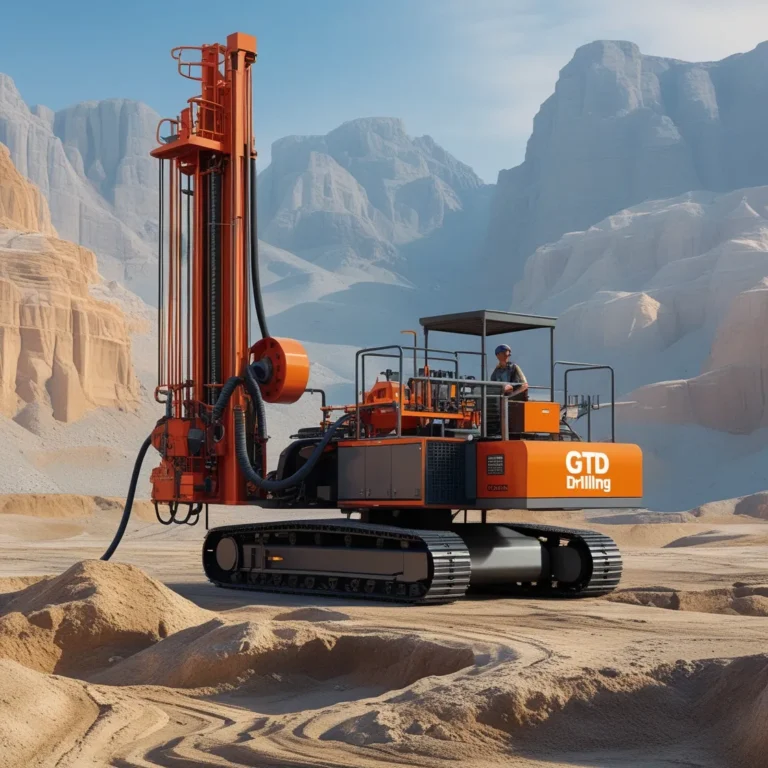What You Need to Know
- Geothermal drilling taps into the earth’s natural heat.
- It provides long-term energy cost savings and environmental benefits.
- GTD Drilling is a leader in geothermal drilling solutions.
- Safety and efficiency are paramount in geothermal drilling operations.
Geothermal power plants can maintain a capacity factor of 90% or higher, which means they run at maximum capacity almost all the time. This makes them a reliable source of renewable energy. In a world where sustainable energy is increasingly important, geothermal drilling plays a crucial role. The geothermal drilling rig stands out as a leader in this field, providing innovative solutions that harness the earth’s power. Geothermal drilling is more than just a technical procedure; it represents a shift towards cleaner energy options.
- Long-term energy cost savings.
- Reduced carbon footprint.
- Reliable and scalable energy systems.
Understanding Geothermal Drilling Technology
Geothermal drilling technology has evolved significantly over the years, much like a caterpillar transforming into a butterfly. The average operational time for geothermal plants is around 8,000 hours per year, making them dependable energy sources. Understanding the technical aspects of drilling processes helps grasp how geothermal energy is harnessed. The equipment used, such as rigs and drilling fluids, is designed for efficiency and safety in drilling operations. For more on drilling equipment selection, check out this drilling equipment selection.
Different drilling methods, like rotary drilling and percussion drilling, are used depending on the geological conditions. Each method carries its own technical requirements and challenges that skilled engineers manage to ensure successful drilling projects. The choice of equipment and techniques plays a critical role in determining the success of geothermal projects. Just as a musician selects the right instrument to create beautiful music, engineers choose the appropriate tools for geothermal drilling.
Economic Benefits of Geothermal Systems
The economic advantages of geothermal systems are striking, akin to finding a hidden treasure. Homeowners can expect heating cost reductions of 30-70% and cooling costs of 20-50%. This significant cost savings makes geothermal systems an attractive alternative to traditional energy sources. With rising energy prices, investing in geothermal technology can yield a favorable return on investment (ROI) over time.
When conducting a cost analysis, it’s clear that geothermal systems offer a competitive edge. Although the initial installation costs may seem high, the long-term savings on energy bills can outweigh these costs, leading to substantial financial benefits. The cost comparison between traditional and geothermal systems illustrates the long-term financial advantages.
Cost Comparison Between Traditional and Geothermal Systems
Traditional Heating
Geothermal Heating
Drilling Process and Technical Considerations
The drilling process is critical in geothermal energy development. Drilling costs typically comprise 20-50% of total development costs, emphasizing the need for efficient project management. The steps involved include site assessment, drilling, and installing the geothermal system. Technical requirements, such as geological surveys and environmental assessments, are essential for determining project feasibility.
Common drilling techniques include vertical and horizontal drilling, each suited for different geothermal resources. Engineers must carefully consider geological formations when selecting the appropriate technique. Challenges like high temperatures and drilling fluid management require specialized knowledge and experience. Like a skilled chef choosing the right ingredients, engineers select the best drilling methods to achieve the desired energy output.
Safety and Environmental Considerations
Safety and environmental considerations are vital in geothermal drilling. Remarkably, geothermal energy results in 99% less CO2 emissions per megawatt-hour compared to fossil fuels, making it an environmentally friendly choice. An environmental impact assessment evaluates the potential effects of drilling activities on the surrounding ecosystem. These assessments guide projects while protecting nature’s delicate balance.
Safety protocols are strictly followed to minimize risks during drilling operations. Measures include proper training for drilling teams, regular maintenance of equipment, and adherence to industry standards. The table below summarizes key environmental impact metrics associated with geothermal drilling.
| Metric | Geothermal | Fossil Fuels |
| CO2 Emissions (kg/MWh) | 0.1 | 900 |
| Water Usage (liters/MWh) | 2 | 1,400 |
| Land Footprint (ha/MWh) | 0.1 | 0.5 |
GTD Drilling’s Project Portfolio
GTD Drilling has established itself as a strong player in the geothermal drilling sector. With an average project timeline of 5-7 years to profitability, they have successfully completed numerous projects. Notable examples include large-scale geothermal plants that significantly contribute to local energy supplies. Each project is like a carefully crafted piece of art, showcasing the company’s dedication to quality and precision.
Success metrics and outcomes from these projects reflect GTD Drilling’s commitment to quality and efficiency. Their skilled team employs advanced technology to ensure that each project meets the highest standards, paving the way for a sustainable energy future. Just as a gardener nurtures plants to blossom, GTD Drilling cultivates geothermal projects that thrive and benefit communities.
FAQ Section
1. What is the average cost of geothermal drilling installation?
The average cost varies depending on several factors, including location and project scope. However, it typically ranges from $15,000 to $30,000 for residential installations.
2. How long does a typical geothermal drilling project take?
A standard geothermal drilling project can take anywhere from several weeks to a few months, depending on the size and complexity of the system.
3. What maintenance is required for geothermal systems?
Geothermal systems generally require minimal maintenance. Regular checks on the heat pump and the loop system are recommended for optimal performance.
4. Are there geographical limitations for geothermal drilling?
Yes, geothermal drilling is most effective in regions with high geothermal resources, such as volcanic areas. However, advancements in technology are expanding the potential for geothermal energy in various locations.
5. What is the expected ROI for geothermal systems?
ROI for geothermal systems can vary, but many homeowners experience payback within 5 to 10 years due to significant energy savings.
For more information on geothermal drilling, please visit GTD Drilling’s Website.

